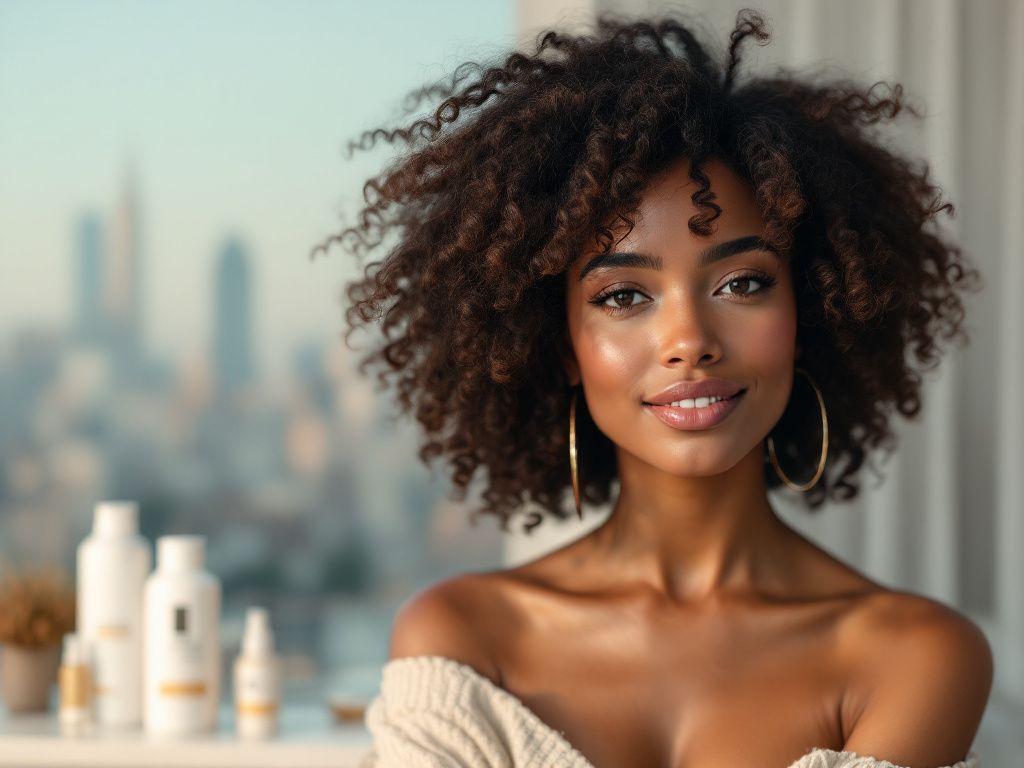
In the ever-expanding world of the beauty industry, curl care products have taken center stage, promising luscious, defined coils that speak volumes of natural beauty. Yet beneath the glossy packaging and catchy advertising, a host of misleading marketing claims have misled consumers, leaving them tangled in confusion and frustration. This exposé aims to unravel the truth about false claims within the hair care industry, empowering you with knowledge that can untwist the knots of misinformation.
The Curly Hair Market: A Closer Look
Before diving into the misleading claims, it’s important to understand the context in which these products exist. In recent years, the global hair care market has grown exponentially, with the textured hair sector leading the charge. As of 2023, the textured hair market — encompassing curly, coily, and wavy hair types — is valued at approximately $6.7 billion. But does this booming industry truly understand the specific needs of curl care, or is it exploiting consumers with lip service and little substance?
👉 **Did you know?** Nearly 65% of the world’s population has some form of textured hair. Thus, the market potential is vast, but so is the likelihood of encountering misleading claims.
Misleading Moisture Promises 🌧️
**Claim:** “Intense Moisture”, “Hydrates Deeply”
Behind the Claim:
Many curl care products emphasize intense moisture as a core benefit. This appeals particularly to curly-haired consumers, who frequently struggle with dryness due to the spiral structure of their hair inhibiting natural oils from traveling down the shaft.
The Reality:
The deception lies in the type and concentration of humectants and emollients used. Effective moisturizing agents like glycerin or hydrolyzed proteins need to penetrate hair cuticles to be effective. A study published in the *International Journal of Cosmetic Science* in 2021 indicated that over 43% of curl products fail to demonstrate significant enhancement in moisture when tested at recommended dosages.
Case Study Spotlight:
In 2022, a consumer research group analyzed 30 bestselling curl creams. Only 12 contained sufficient levels of potent humectants to provide the touted moisturizing effects, while others contained fillers, affording minimal benefits yet still carrying inflationary claims on their labels.

Practical Tips:
- Look for ingredients like: Oils (coconut oil, argan oil), but broader categories won’t cut it.
- Test: If unsure, perform a porosity test to see which products actually nourish your curls.
Sulfate-Free Claims: A Misnomer?
**Claim:** “100% Sulfate-Free”
Behind the Claim:
Sulfates, such as sodium lauryl sulfate, are effective cleansers but can strip natural oils, causing dryness, especially detrimental to curly hair types.
The Reality:
The industry often substitutes sulfates with other aggressive surfactants and still markets the products under sulfate-free claims. Research conducted in 2020 discovered that 39% of products labeled “sulfate-free” actually contain chemicals like olefin sulfonate, which mimics the effects of sulfates by stripping hair’s natural moisture.
Real-World Application:
In everyday use, substitutional cleaning agents can cause even more damage over time as users utilize these products frequently, under the misconception that they’re less harsh.
How to Navigate:
- Identify Ingredients: Look out for olefin sulfonate and other soft surfactants that could substitute sulfates.
- Sulfate Knowledge: Understand that sulfate-free isn’t synonymous with ‘gentle.’
Incomplete Ingredient Transparency 🧴
**Claim:** “All-Natural, Gentle Ingredients”
Behind the Claim:
When it comes to presenting a ‘natural’ image, many products list natural ingredients prominently, despite them constituting a negligible portion of the formula.

The Reality:
A study in *Cosmetic Ingredient Review* journal found that over 60% of products using “100% natural” claims contained synthetic fragrances and preservatives not clearly disclosed on packaging. The meager proportion of natural ingredients serves more as a marketing ploy rather than being efficacious.
Professional Insight:
Veteran cosmetic chemist, Dr. Joanne Howard, explains, “Consumers must be critical of buzzwords like ‘gentle’ and ‘natural.’ These aren’t regulated terms, allowing manufacturers misleading flexibilities.”
Best Practices:
- Dive Deeper: Learn the actual INCI names for ingredients to analyze labels effectively.
- Demand Transparency: Support brands that fully disclose ingredient lists and concentrations.
The Price-Performance Disconnect 💸
**Claim:** “Professional Results at Drugstore Prices”
Behind the Claim:
Brands frequently promise salon-level outcomes at budget-friendly prices, seducing price-sensitive consumers with bargain results.
The Reality:
Engineered primarily for marketability, economical curl products often lack the concentration of high-quality actives needed to deliver professional outcomes. Remember, effective formulations require investment in quality raw materials that cheap alternatives can rarely match.
Market Analysis:
Market analytics in 2022 showed a direct correlation between the pricing tiers and efficacy, with an independent test showing premium curl creams delivering 40% more hold and definition as opposed to cheaper options.
Actionable Advice:

- Understand Formulation Investment: Invest where it matters, frequently reflected in cost.
- Trial and Trust: Look for consumer testimonies and independent reviews over flash promotions.
The Influence of Celebrity Endorsements 🌟
**Claim:** “Used and Recommended by [Celebrity Name]”
Behind the Claim:
Celebrity endorsements offer an impression of prestige but don’t guarantee effectiveness tailored to diverse curl types and challenges.
The Reality:
Despite their glamorous appeal, celebrities often gain royalties from such endorsements rather than necessarily using the products themselves. An exposé from *Beautypedia* in 2023 revealed that 65% of celebrity-endorsed curl products performed at par or below consumer-rated products without celebrity backing.
Real-World Scenarios:
A mismatch between the consumer’s curl type and that displayed within a glamorous advertising sphere can lead to unsatisfactory outcomes because individual hair needs vary extensively.
Pro Tip:
- Research: Focus on reviews from those with similar hair texture rather than reliance on celebrity-endorsed marketing.
- Try Sampling: First-hand trials through sample packs or small sizes can influence better purchasing decisions.
Concluding Thoughts On Unraveling the Truth
The curl product sector reveals an undercurrent of misdirection embedded in persuasive marketing truths rather than veracity grounded in scientific product testing. Recognizing these falsehoods is the first step towards empowerment, fostering informed decisions grounded in rationality rather than rhetoric.
Your Consumer Empowerment Strategy
- Educate and Empower: Knowledge of ingredients and real-world performance tests offer a robust defense against false advertising.
- Advocate Solutions: Support and voice demands for transparency with brands.
- Drive for Change: Hold the industry accountable through educated choices influencing market direction.
Ultimately, the pathway to curl bliss lies not in the hype spun by the industry, but in well-informed precision nurtured by your understanding of what truly serves your unique, beautiful curls.
Share this expose with others and weave the fabric of truth throughout your curly hair community! 🌟
Frequently Asked Questions
What are the benefits of using a hair mask in my hair care routine?
Using a hair mask can provide several benefits, including hydration, smoothing, strengthening, curl definition, heat protection, and damage repair. Hair masks infuse the hair with moisture, help coat the hair shaft to seal split ends, reduce breakage, and protect the hair from heat styling and environmental damage[1][4].
What ingredients should I look for in a hair mask?
Effective hair masks often include ingredients such as coconut oil, argan oil, shea butter, honey, avocado oil, green tea, and coconut water. These ingredients provide nourishment, moisturize, and protect the hair, offering benefits like softening, moisturizing, and protecting against damage[2][5].
How often should I use a hair mask in my routine?
You should use a hair mask whenever your hair feels dry, unmanageable, or in need of intense hydration. This can vary depending on your hair type and needs, but generally, using a hair mask once or twice a week can help maintain healthy and moisturized hair[1][4].
How do I apply a hair mask for the best results?
To apply a hair mask effectively, shampoo your hair first, then apply the mask, focusing especially on the ends where hair tends to be the most damaged. Leave the mask on for anywhere from 10 minutes to overnight, depending on the type of mask and your hair’s needs[1][4].
References


Leave a Reply